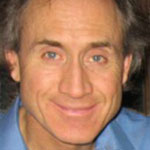How Circular Functions Shape Random Number Games Like Big Bass Splash
1. Introduction to Circular Functions and Their Role in Modern Mathematics and Gaming
Circular functions, including sine, cosine, and tangent, are fundamental mathematical tools that describe periodic phenomena encountered in nature and technology. Their properties—such as oscillation, phase shifts, and amplitude—make them essential for modeling waves, signals, and even patterns in gaming systems. Understanding how these functions influence modern mathematical models provides insight into complex systems, including the seemingly unpredictable outcomes in digital games.
While games like more chaos offer entertainment through randomness, behind the scenes, circular functions often underpin the algorithms that generate these unpredictable results, blending mathematical precision with the illusion of chance. Exploring their role reveals the deep connection between timeless mathematical principles and contemporary gaming experiences.
Contents
- Mathematical Foundations of Circular Functions
- Circular Functions in Signal Processing and Sampling Theory
- The Geometry of Circular Functions and Probability in Gaming
- Circular Functions as a Basis for Pseudo-Random Number Generation
- Case Study: Big Bass Splash and the Application of Circular Functions
- Deeper Mathematical Insights: Beyond Basic Circular Functions
- Non-Obvious Connections: Electromagnetic Waves and Signal Sampling in Gaming
- Theoretical Perspectives: Computability, Turing Machines, and Randomness
- Conclusion: The Interplay of Circular Functions, Sampling, and Randomness in Modern Gaming
2. Mathematical Foundations of Circular Functions
Definition and Unit Circle Interpretation
Circular functions are defined based on the unit circle—a circle with radius one centered at the origin on the coordinate plane. The sine of an angle corresponds to the y-coordinate of a point on the circle, while the cosine corresponds to the x-coordinate. For example, if ? is an angle measured from the positive x-axis, then:
sin(?) = y-coordinate
cos(?) = x-coordinate
This geometric interpretation provides a visual understanding of how circular functions oscillate between -1 and 1, creating smooth, periodic waveforms essential in various applications.
Relationship Between Circular Functions and Periodicity
A defining feature of these functions is their periodicity: they repeat their values in a regular cycle. The period of sine and cosine is 2? radians (or 360 degrees), meaning:
sin(? + 2?) = sin(?)
cos(? + 2?) = cos(?)
This inherent repeating pattern is what makes circular functions invaluable for modeling oscillations, signals, and cyclic behaviors in systems, including the randomness mechanisms in gaming algorithms.
Encoding Phase, Amplitude, and Frequency
Circular functions encode key signal properties:
- Phase: The horizontal shift along the cycle, affecting the starting point of oscillation.
- Amplitude: The peak value of the wave, which in sine/cosine functions is typically 1, but can be scaled.
- Frequency: How often the wave repeats per unit time, directly related to the period and crucial in signal sampling and randomness modeling.
3. Circular Functions in Signal Processing and Sampling Theory
Nyquist Sampling Theorem and Digital Signals
The Nyquist sampling theorem states that in order to accurately reconstruct a continuous signal digitally, it must be sampled at a rate at least twice its highest frequency component. Circular functions underpin this process by modeling the waveforms being sampled. For example, sinusoidal signals are often sampled at discrete intervals, and their precise reconstruction relies on understanding their periodic nature.
Modeling Waveforms in Sampling and Reconstruction
Digital audio, video, and other signals are represented as sums of sinusoidal components—Fourier series—where each component is a circular function with specific amplitude, phase, and frequency. This approach allows complex, real-world signals to be broken down into manageable, oscillating parts, facilitating both sampling and reconstruction processes.
Impact on Unpredictability in Digital Systems
The interplay of sampling, quantization, and circular functions introduces elements of unpredictability and pseudo-randomness in digital systems. While the underlying processes are deterministic, the complexity of combined sinusoidal components can produce outcomes that appear random, a principle exploited in pseudo-random number generators used in gaming systems.
4. The Geometry of Circular Functions and Probability in Gaming
Visualizing Probabilities with Circular Graphs
Graphing sine and cosine functions provides intuitive visualizations of probability distributions. For instance, the likelihood of certain outcomes can be represented by the amplitude of oscillating waves, where peaks and troughs correspond to higher or lower probabilities.
Using Sine and Cosine Waves to Simulate Random Outcomes
Game developers often utilize these functions to simulate randomness by sampling points on a sine or cosine wave at specific intervals, then mapping those points to game outcomes. This method leverages the mathematical properties of circular functions—smooth oscillation and periodicity—to generate sequences that mimic true randomness.
Implications for Fairness and Unpredictability
Because of their inherent unpredictability when combined with phase shifts and scaling, circular functions contribute to fair game design. They help ensure outcomes are not easily predictable, maintaining player engagement and trust in the system’s integrity.
5. Circular Functions as a Basis for Pseudo-Random Number Generation
Generating Pseudo-Random Sequences via Periodicity and Phase Shifts
By applying phase shifts, amplitude modifications, and nonlinear transformations to circular functions, algorithms can produce sequences that appear random over large periods. For example, a sine function with a varying phase can generate a pseudo-random sequence by sampling its value at different angles.
Algorithms Employing Circular Functions
| Algorithm | Description |
|---|---|
| Sine-Based PRNG | Uses sine function with a seed value and phase shift to generate pseudo-random numbers. |
| Phase Shift Method | Introduces variability by shifting the phase of circular functions at each iteration. |
Advantages and Limitations
While circular functions enable efficient pseudo-random sequence generation, they are deterministic and can be vulnerable if the seed or phase shifts are known. Nonetheless, their mathematical simplicity offers a robust foundation for many gaming algorithms, balancing computational efficiency with sufficient unpredictability for entertainment purposes.
6. Case Study: Big Bass Splash and the Application of Circular Functions
Gameplay Mechanics and Randomness
Big Bass Splash is a modern online slot game that combines visual appeal with elements of chance. Its core mechanics involve spinning reels and random prize outcomes, which are often influenced by underlying mathematical models designed to ensure fairness and unpredictability.
Using Circular Functions to Influence Outcomes
Game developers may incorporate circular functions into the random number generators (RNGs) that determine reel stops and bonus triggers. For example, sampling a sine wave at specific intervals synchronized with game state can create sequences that appear random to players but are actually governed by deterministic mathematical processes. This approach helps maintain fairness while keeping outcomes engaging and unpredictable.
Perceived Fairness and Unpredictability
By leveraging the properties of circular functions—smooth oscillation, phase variability, and periodicity—developers ensure that outcomes are neither easily predictable nor manipulable. This mathematical underpinning fosters trust among players, who perceive the game as fair and genuinely chance-based.
7. Deeper Mathematical Insights: Beyond Basic Circular Functions
Fourier Analysis and Complex Signals
Fourier analysis decomposes complex signals into sums of sinusoidal components—each represented by circular functions. This technique is fundamental in analyzing and synthesizing signals that resemble the randomness seen in gaming algorithms, especially when multiple harmonic components interact.
Harmonics and Shaping Randomness
The superposition of multiple harmonic waves (with different phases and frequencies) creates intricate patterns that mimic randomness. Game designers can manipulate these harmonics to fine-tune the unpredictability of outcomes, ensuring a fair yet engaging experience.
Advanced Models for Fairness
Incorporating complex Fourier-based models can enhance the statistical properties of random number generators, reducing predictability and bias. Such mathematical sophistication is increasingly relevant in high-stakes gaming environments and for ensuring regulatory compliance.
8. Non-Obvious Connections: Electromagnetic Waves and Signal Sampling in Gaming
Link Between Electromagnetic Waves and Digital Signal Processing
Electromagnetic waves—fundamental to wireless communication—share properties with signals modeled by circular functions. In digital gaming, wireless data transmission relies on sampling these waves accurately, often using sine and cosine functions to represent their oscillations.
Influence of Electromagnetic Phenomena on Game Technology
Advances in measuring electromagnetic properties—such as phase and amplitude—have improved the precision of signal processing hardware, leading to smoother online gaming experiences. These physical principles ensure that data transmitted over networks maintains integrity, supporting fair and unpredictable gameplay.
Physical Signal Properties and Randomness
Physical phenomena like electromagnetic interference can introduce subtle variations, which, when harnessed correctly, enhance the unpredictability of digital systems. Recognizing these parallels underscores the importance of fundamental physics in designing secure and fair gaming environments.
9. Theoretical Perspectives: Computability, Turing Machines, and Randomness
Computational Limits and Randomness
Turing machines, the foundational model of computation, highlight that certain outcomes cannot be predicted or simulated for truly random processes. In gaming, this raises questions about the limits of pseudo-random algorithms and the potential for genuine randomness to be achieved through complex mathematical constructs.
Implications for Game Algorithms
Understanding these limits guides developers in designing algorithms that balance fairness, security, and unpredictability. For instance, incorporating elements inspired by physical noise or complex mathematical functions—like those involving circular functions—can improve the robustness of randomness sources.
Enhancing Fairness and Security
A deep grasp of computability and the mathematical foundations of randomness helps prevent manipulation and ensures transparent fairness, fostering trust in digital gaming platforms.
10. Conclusion: The Interplay of Circular Functions, Sampling, and Randomness in Modern Gaming
Throughout this exploration, we’ve seen how timeless mathematical principles—embodied in circular functions—permeate modern gaming systems, from audio sampling to outcome randomness. Their properties facilitate the creation of unpredictable yet fair experiences, exemplified by games like more chaos.
“Mathematics provides both the language and the tools to engineer unpredictability—balancing fairness and excitement in digital gaming.”
By integrating advanced mathematical models—such as Fourier analysis and physical signal principles—developers can enhance the integrity and engagement of their games. For players, understanding these underpinnings fosters appreciation for the complexity behind seemingly simple outcomes.




